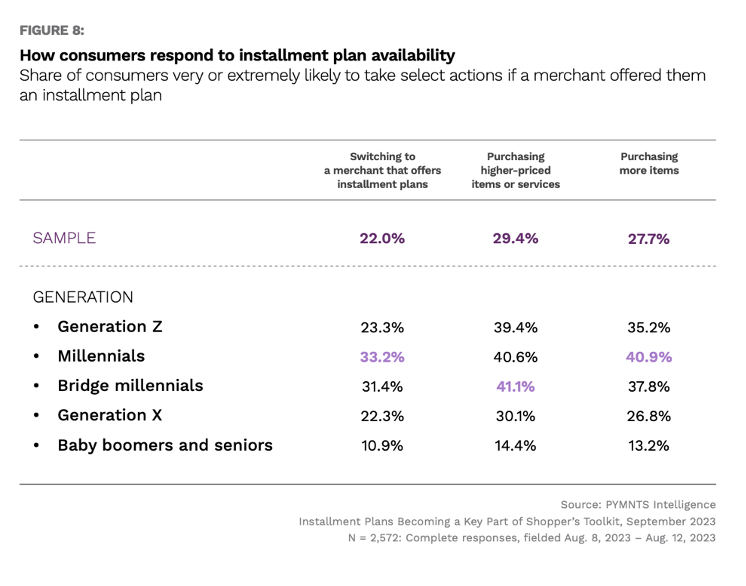Lack of Split-Pay Option May Cost Merchants 22% of Customers

Merchants can maximize their competitiveness by offering split-pay options — and should do so if they don’t want to lose potential sales or want to see their active customers migrating to other competitors that offer this convenience.
This is one of the key findings extracted from “Installment Plans Becoming a Key Part of Shopper’s Toolkit,” a PYMNTS Intelligence study done in collaboration with Splitit that examines how consumers use installment plans for retail products — merchant versus credit card and buy now, pay later (BNPL).
Availability of Split-Pay Options

Failing to present shoppers with split-pay options can cause retail merchants to lose sales. The survey found that a significant 22% of consumers are seriously considering switching to competitors that offer this payment option. Consumers most likely to abandon their current choice are millennials — representing the most lucrative segment. Nearly 1 in 3 of this group say they would be open to switch merchant if split-pay options were not available.
The potential impact of not offering installment plans goes beyond customer attrition. For example, nearly 3 in 10 of consumers say they would be more likely to consider larger purchases if they had the flexibility to use their existing credit card limits. In addition, 28% indicate the prospect of adding additional items to their shopping carts.
So, lack of split-pay options may cause not only clients to migrate to other competitors, but also to miss the possibility to generate additional cross-sales.
Timing Matters
If the availability of split-pay plans is key to retaining the customer and generating additional sales, the timing of their introduction is also key. Most consumers prefer installment plans that are presented before reaching the checkout. According to the study, 2 out of 3 consumers want merchants to showcase split-pay plans at the precise moment of the purchasing process, and just 23% favored reviewing plan options during checkout. This suggests that the later the installment payment options are introduced, the greater the possibility of losing the customer.